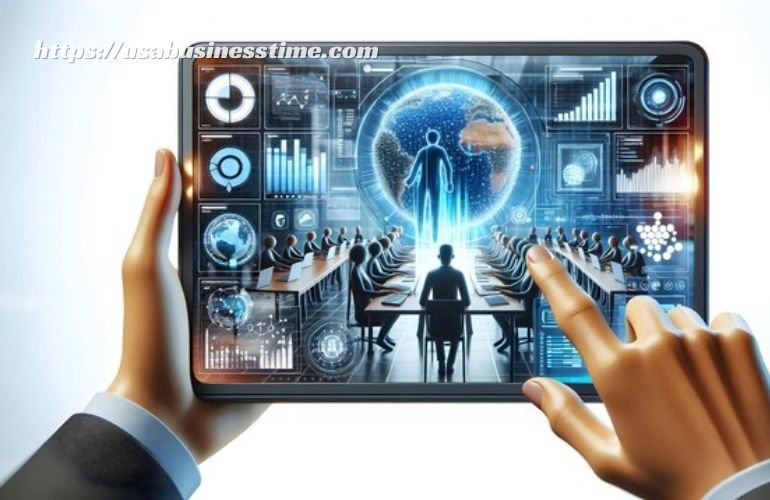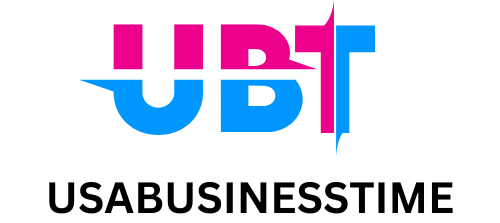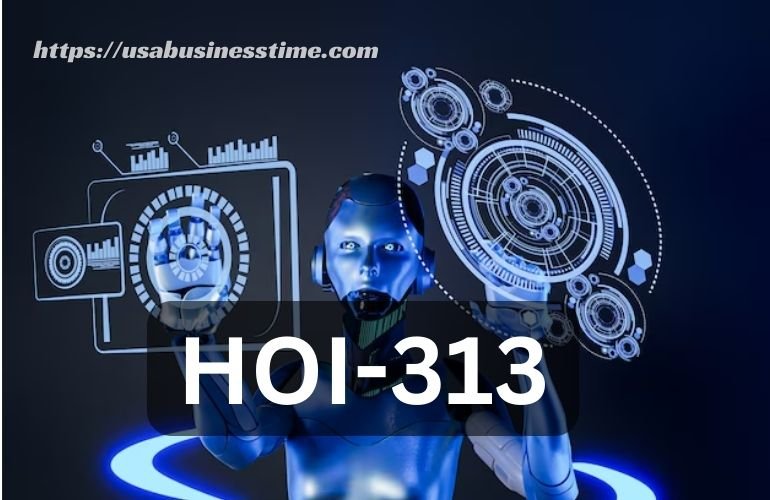HOI-313 is reshaping how we connect, communicate, and experience technology. This code has found relevance across various fields, influencing everything from personal relationships to business strategies. But what makes HOI-313 different? How does it shape interactions, and what potential does it hold for the future? This article breaks down the essentials of HOI-313, providing a clear look at its applications, benefits, and challenges. Explore why HOI-313 matters in today’s tech-driven world and how it’s set to impact our lives on multiple levels.
Table of Contents
What is HOI-313?
HOI-313 is a digital concept that redefines connectivity, bringing unique elements to how humans interact with technology and each other. Emerging from advanced research in artificial intelligence and digital systems, HOI-313 introduces new ways to facilitate human connections, making interactions smoother, more intuitive, and adaptable across different environments.
At its core, HOI-313 serves as a sophisticated framework for bridging gaps between traditional and digital communication. This structure powers various tools, platforms, and technologies that impact not only individual users but also teams, businesses, and industries. By integrating insights from behavioral science, communication models, and advanced data processing, HOI-313 crafts experiences that feel personal and responsive.
An essential aspect of HOI-313 lies in its adaptability. It’s not bound to a single application or field; rather, it applies across a spectrum, from enhancing personal relationships to fostering teamwork in professional settings. The concept works by aligning its digital processing power with the human need for authentic and efficient interactions, ultimately offering an enriched form of engagement.
The Role of HOI-313 in Modern Connectivity
HOI-313 has quickly become a transformative element in modern connectivity, shaping interactions in personal, professional, and social spaces. This concept goes beyond just enabling communication; it optimizes the quality and effectiveness of connections. By combining technology with an understanding of human behavior, HOI-313 creates experiences that are engaging and responsive, tailored to meet diverse needs.

In personal connections, HOI-313 enhances interactions by allowing users to communicate more naturally and intuitively across digital platforms. For example, in social media and messaging apps, it facilitates more meaningful exchanges, reducing misunderstandings and fostering genuine connections. Whether it’s through improved algorithms or features that better interpret emotional tones, HOI-313 plays a role in making digital communication more aligned with real-life conversations.
In professional environments, HOI-313 supports team dynamics and collaboration. It helps create a unified workspace where remote or distributed teams can communicate effectively. Tools powered by HOI-313 can enhance productivity by enabling seamless information sharing, efficient decision-making, and supportive feedback mechanisms. This can be particularly impactful in industries that rely on teamwork, as it fosters a work culture that emphasizes clear, constructive interactions.
HOI-313 also influences larger social and cultural connections by connecting people from diverse backgrounds and helping break down language or cultural barriers. It facilitates understanding and cooperation by integrating translation and personalization tools, making it easier for people to engage across borders. By empowering more inclusive conversations, HOI-313 broadens the scope of digital communication, creating pathways for global collaboration.
The significance of HOI-313 in connectivity is clear across these various areas. Whether it’s strengthening personal bonds, enhancing teamwork, or fostering global networks, HOI-313 redefines what it means to be connected in a digital world, setting a new standard for interaction and engagement.
Applications of HOI-313 Across Industries
HOI-313’s adaptability has allowed it to find applications across multiple fields, each benefiting from the enhanced connectivity it offers. By blending artificial intelligence with an understanding of human needs, HOI-313 supports industries in achieving stronger, more dynamic interactions that improve outcomes in various sectors.
1. Technology:
HOI-313 powers smarter technology solutions that enhance user experience across devices. In smartphones, smart home devices, and virtual assistants, it allows for more personalized, context-aware interactions. This helps users connect seamlessly with their devices, where intuitive prompts and responses make tasks easier, from managing daily schedules to controlling home environments. In cloud and data services, HOI-313 provides secure and responsive communication channels, improving real-time data accessibility and decision-making.
2. Healthcare:
In healthcare, HOI-313 contributes to improved patient outcomes by supporting better communication between patients, providers, and caregivers. Telehealth platforms enhanced by HOI-313 offer a more engaging, accurate, and interactive experience, where medical professionals can track health metrics and interact with patients remotely, allowing for timely interventions. Additionally, HOI-313 assists in processing large sets of patient data, identifying patterns that can lead to better diagnoses, treatment plans, and preventive care.
3. Education:
HOI-313 plays a role in creating more immersive and effective educational environments. Through smart tutoring systems, virtual classrooms, and learning management systems, it enables personalized learning experiences that adapt to each student’s pace and style. This supports educators in delivering lessons that resonate with students, enhancing engagement and retention. In research, HOI-313 aids in collaborative projects, facilitating real-time data sharing and communication across global teams, making knowledge exchange more fluid and accessible.
4. Entertainment:
The entertainment industry benefits from HOI-313’s ability to create interactive and engaging user experiences. In gaming, for instance, it powers AI-driven characters that respond to players in a lifelike manner, enhancing the gaming experience. Streaming platforms utilize HOI-313 to recommend content based on user preferences, creating personalized playlists and recommendations. In virtual and augmented reality, HOI-313 enables immersive experiences that allow users to interact within digital environments as naturally as they would in the real world.
5. Business and Customer Engagement:
In business, HOI-313 strengthens customer engagement by offering personalized and responsive communication. Customer service platforms that integrate HOI-313 provide support through chatbots and virtual assistants capable of understanding and addressing complex inquiries. In e-commerce, it assists by tailoring product recommendations, improving customer satisfaction, and increasing sales. Internally, businesses use HOI-313 to streamline operations, from enhancing teamwork to managing workflows more effectively, which boosts overall productivity.
HOI-313 has proven valuable across these industries, providing solutions that enhance connectivity, improve experiences, and drive meaningful outcomes. Whether through smarter technology, personalized healthcare, immersive learning, or interactive entertainment, HOI-313 continues to shape and redefine the standards in each of these fields.
Common Misconceptions About HOI-313
HOI-313, as an innovative concept, often leads to various misunderstandings about its functionality, purpose, and impact. Clarifying these misconceptions helps users and stakeholders make informed decisions and fully appreciate HOI-313’s potential.
1. HOI-313 Only Involves Technology Enthusiasts:
One common belief is that HOI-313 is solely for tech-savvy individuals or industries that rely heavily on digital advancements. In reality, HOI-313’s design is user-friendly, making it accessible to a broad audience beyond technology specialists. Its applications span diverse fields, from healthcare to education, allowing people with varied levels of digital familiarity to benefit from it. Whether for daily personal tasks or professional collaboration, HOI-313 offers accessible solutions tailored to the user’s needs.
2. It Replaces Human Interactions:
Some view HOI-313 as a technology that replaces, rather than complements, genuine human connections. While it certainly enhances digital communication, HOI-313’s goal is not to substitute face-to-face interactions. Instead, it supports them by making remote communication more efficient and personal. HOI-313 is designed to bridge gaps, ensuring people stay connected when in-person interaction isn’t possible, while still valuing the importance of direct human relationships.
3. It’s Too Complex for Everyday Use:
There’s a misconception that HOI-313 is a highly technical system, requiring specialized knowledge to operate. While HOI-313 is built on advanced technology, the user experience is streamlined for simplicity. Whether someone is using it in a workplace setting or at home, HOI-313 offers intuitive interfaces that guide users naturally. From virtual assistants to communication platforms, HOI-313 aims to make technology less intrusive and more supportive of daily routines.
4. Privacy is Not a Priority in HOI-313:
As with many tech advancements, privacy concerns often arise. Some users fear that HOI-313 may compromise personal data or fail to protect user privacy adequately. On the contrary, HOI-313 places a strong emphasis on secure data handling and transparency. Developers have integrated protocols to protect user information, ensuring data is managed responsibly. With privacy regulations and safeguards in place, HOI-313 aligns with user expectations for safety and security.
5. It’s Only Relevant for Large Corporations:
Another misconception is that HOI-313 primarily benefits large corporations or industry leaders. While many businesses do gain from its applications, small businesses, startups, and individual users also find value in HOI-313’s features. For example, small businesses use it to enhance customer engagement without requiring extensive resources, and individuals utilize it to simplify personal communication and management tasks. HOI-313’s flexibility makes it an asset for entities of all sizes.
6. It’s Just Another Trend in Digital Communication:
HOI-313 is sometimes seen as a temporary trend in the rapidly evolving tech landscape. However, its foundations in enhancing connectivity and understanding human interaction suggest it has long-term relevance. HOI-313 focuses on practical solutions that address real-world communication needs, indicating its potential to stay integral as technology continues to evolve.
Clearing up these misconceptions allows users to see the genuine potential of HOI-313 and how it integrates into diverse contexts. This understanding opens the door for broader and more effective applications, bringing users closer to the real benefits that HOI-313 offers in modern communication and connectivity.
Ethical and Societal Considerations
As HOI-313 becomes more integrated into daily life, it raises questions about the ethical and societal impacts of its widespread use. Understanding these considerations allows for responsible adoption and fosters trust among users. Here are some of the core areas where ethics and social effects intersect with HOI-313.

1. Privacy and Data Security:
One of the foremost concerns surrounding HOI-313 is data privacy. As it involves highly personalized interactions, the potential for collecting and storing sensitive data is significant. Safeguarding user data becomes a key responsibility, demanding strict compliance with privacy regulations and best practices. Developers of HOI-313 must prioritize transparency, allowing users to understand and control how their data is handled. Respect for user privacy forms the backbone of building trust in this technology.
2. Bias and Fairness:
Given its reliance on artificial intelligence, HOI-313 faces the risk of bias in its algorithms, which could lead to unintended discriminatory outcomes. Whether in healthcare, education, or customer service, ensuring that AI-driven decisions are fair and unbiased is essential. Efforts must be taken to develop balanced datasets and conduct thorough testing to identify and mitigate biases, so that HOI-313 serves all users equitably.
3. Psychological Impact of Digital Connectivity:
As HOI-313 enhances digital connections, there’s a need to balance these with real-world social interactions. Relying too heavily on digital connectivity may impact how people engage in person, potentially affecting mental health and well-being. Educators, healthcare providers, and community leaders must consider how best to integrate HOI-313 while promoting healthy interaction habits that don’t compromise offline relationships.
4. Accessibility and Inclusivity:
To truly benefit society, HOI-313 must be accessible to everyone, regardless of physical abilities, socioeconomic status, or geographic location. Making sure the technology accommodates various needs—such as providing options for individuals with disabilities or for those in underserved communities—enhances inclusivity. This involves developing adaptable features, user-friendly interfaces, and affordable solutions that allow more people to experience HOI-313’s advantages.
5. Impact on Employment and Workforce Dynamics:
As HOI-313 automates processes and optimizes productivity, it may also disrupt traditional job roles, especially in industries where routine tasks are prevalent. Preparing the workforce to adapt to new roles within this evolving landscape is essential. Education and training programs that emphasize digital skills can help workers transition into positions that are enhanced, rather than replaced, by HOI-313. Additionally, businesses may find value in combining human and AI strengths, fostering environments where both can collaborate effectively.
6. Accountability and Transparency in Decision-Making:
HOI-313’s influence on decision-making—whether in business, healthcare, or social services—requires clarity about how decisions are made. AI-driven decisions, if left unchecked, may lack accountability, leading to concerns among users. Transparency in algorithm design, clear documentation, and options for human oversight are necessary to ensure users have confidence in the outcomes generated by HOI-313.
7. Ethical Use in Sensitive Fields:
In areas like healthcare and education, where decisions impact individual well-being and development, ethical considerations are paramount. HOI-313 must be implemented thoughtfully, with a focus on benefiting end users. Guidelines for ethical AI use can guide practitioners in these fields, helping them apply HOI-313 responsibly and ethically.
Addressing these ethical and societal factors is essential for HOI-313’s long-term success and acceptance. These considerations help guide its development toward responsible, inclusive, and user-centered solutions that support rather than disrupt societal values.
Future Potential and Innovations in HOI-313
As technology advances, HOI-313 stands poised for impactful growth, evolving to meet the changing demands of both individuals and industries. Its future holds promising possibilities that could reshape how people connect, collaborate, and solve complex challenges.
1. Integration with Emerging Technologies:
HOI-313’s capabilities can expand significantly when integrated with new technologies, such as 5G, quantum computing, and the Internet of Things (IoT). Faster and more reliable connectivity from 5G, for example, would allow HOI-313 to support real-time interactions on a larger scale, enhancing its use in fields that demand instant data processing, like telemedicine and autonomous vehicles. Quantum computing, with its immense processing power, could enable HOI-313 to solve complex data problems, further optimizing applications in sectors like finance, research, and artificial intelligence.
2. Advancements in Artificial Intelligence:
Artificial intelligence is central to HOI-313, and as AI algorithms continue to improve, HOI-313 will become even more intuitive and effective. Enhancements in natural language processing, emotional recognition, and predictive analytics are likely to make interactions feel increasingly personalized and responsive. Such advancements allow HOI-313 to anticipate user needs, providing recommendations or assistance that feels almost human in its understanding and context sensitivity.
3. Broader Applications in Healthcare and Wellness:
The healthcare industry has only begun to explore HOI-313’s potential. Future applications could see it providing more sophisticated health tracking and monitoring, where data gathered from wearable devices and medical records combine to offer a holistic view of a patient’s well-being. This technology could empower healthcare professionals to deliver preventive care, respond proactively to health changes, and support mental wellness initiatives, creating a seamless and integrated healthcare experience for patients.
4. Enhanced Collaborative Tools for Global Teams:
As remote work continues to grow, HOI-313 could transform collaboration across borders, providing tools that go beyond traditional video calls and chats. Future tools may simulate real-world office environments, where team members can interact with a virtual presence, enabling smoother and more authentic collaboration. Language barriers could become less of an obstacle with real-time translation features, allowing teams from diverse backgrounds to work together effortlessly.
5. Educational Innovations and Adaptive Learning:
HOI-313’s role in education could evolve to create more dynamic and adaptable learning environments. By analyzing a student’s learning patterns, strengths, and areas for improvement, HOI-313 could customize lessons that adapt in real-time, supporting more effective learning. Additionally, virtual classrooms could become increasingly immersive, bringing together students from around the world and allowing them to engage in activities that go beyond traditional methods.
6. Sustainable Solutions and Smart Cities:
HOI-313 can contribute to sustainable practices by optimizing resources and supporting smart city infrastructure. For example, it could monitor energy consumption, manage waste systems efficiently, and improve public transportation systems, reducing environmental impact. Integrating HOI-313 in smart cities could result in greener, more sustainable urban spaces, improving residents’ quality of life and creating a cleaner future.
7. Global Communication and Cultural Exchange:
HOI-313 has the potential to connect people from different cultural backgrounds like never before. By offering advanced tools for communication that break down language and cultural barriers, it encourages cultural exchange and global understanding. Virtual gatherings, international educational programs, and cultural events could become more accessible, fostering an environment where diverse perspectives are shared and celebrated.
As these potential developments unfold, HOI-313 will continue to play a pivotal role in shaping a future where technology serves people and their communities meaningfully. Its growth across multiple sectors reflects an ongoing commitment to creating connectivity solutions that not only meet current needs but also open new avenues for innovation and collaboration.
Getting Started and Best Practices with HOI-313
Adopting HOI-313 in various contexts can offer numerous benefits, but understanding the best practices for its implementation helps maximize its impact. Whether integrating it for personal productivity, business efficiency, or enhanced customer engagement, following these guidelines makes the most of what HOI-313 has to offer.
1. Identify Clear Objectives and Goals
Before implementing HOI-313, it’s important to define specific objectives. Setting clear goals—such as improving team collaboration, enhancing user engagement, or streamlining communication—provides a direction that informs how HOI-313 will be used. Clear objectives help tailor the setup to meet specific needs and offer measurable benchmarks to track progress.
2. Invest in User Training and Familiarization
For effective adoption, users need time to understand and explore HOI-313’s features. Providing structured training sessions or offering accessible resources helps users feel more comfortable, increasing their ability to apply the system to their specific roles. This applies to both professional environments and personal use, where familiarity can enhance productivity and satisfaction.
3. Prioritize Data Privacy and Security
With any technology that involves data, privacy and security are essential. When setting up HOI-313, configure strong security measures to protect sensitive information. Enable encryption, set up secure access protocols, and review privacy settings regularly to maintain data safety. These measures establish trust, especially in industries like healthcare or finance, where data confidentiality is paramount.
4. Customize Features to Fit User Needs
HOI-313 offers various customizable options, allowing it to adapt to different environments. For instance, businesses can configure communication tools to support team structures, while personal users might adjust settings to streamline specific workflows. Tailoring features to meet user needs not only improves functionality but also creates a more intuitive experience, helping users achieve their goals more efficiently.
5. Encourage Regular Feedback and Iteration
HOI-313 is most effective when it evolves based on user feedback. Establish regular check-ins where users can share their experiences, challenges, and suggestions. This information helps refine the system and adapt it to changing needs, ensuring HOI-313 continues to meet expectations and provides relevant support over time.
6. Balance Automation with Human Interaction
While HOI-313 enhances efficiency through automation, maintaining a balance between automated processes and human interaction is beneficial. For customer service applications, for example, automated responses can handle basic inquiries, but allowing customers access to real-time human support improves satisfaction for complex issues. Finding this balance makes HOI-313 an effective tool without sacrificing personal connections.
7. Monitor Performance and Make Adjustments
Regularly reviewing HOI-313’s performance is essential to understand its impact and identify areas for improvement. Metrics like response times, engagement rates, and user satisfaction provide insights into how well HOI-313 is meeting goals. If certain features aren’t delivering as expected, adjustments can be made to enhance functionality and better serve users.
8. Scale Usage Gradually
For businesses or larger teams, introducing HOI-313 gradually can help users acclimate to the technology. Begin with a specific department or project, then expand as users become comfortable and familiar with its capabilities. Gradual scaling also allows for troubleshooting and refining processes before wider adoption, reducing potential disruptions.
9. Stay Updated with New Features and Updates
HOI-313 is a dynamic technology, with continuous updates and new features being introduced. Staying informed about these updates allows users to benefit from improvements that could increase functionality and productivity. By regularly exploring enhancements, users can make the most of HOI-313’s evolving capabilities.
These best practices support a smooth and effective adoption of HOI-313, enabling users to fully realize its benefits. Whether used for personal goals or organizational objectives, HOI-313’s adaptability combined with these strategies provides a strong foundation for successful integration across various applications.
Conclusion and Next Steps
HOI-313 stands out as a transformative tool in the evolving landscape of digital connectivity, bridging gaps across industries and redefining how people communicate and collaborate. From its applications in personal relationships and professional teamwork to advancements in healthcare, education, and entertainment, HOI-313 provides a flexible, intuitive approach that aligns with diverse needs.

As the potential for HOI-313 continues to expand, adopting this technology thoughtfully allows individuals and organizations to harness its benefits fully. By following best practices—such as customizing features, prioritizing security, balancing automation, and staying responsive to feedback—users can maximize the value HOI-313 offers. The adaptability of HOI-313 not only supports current needs but also opens doors for innovations in artificial intelligence, data processing, and digital communication.
Looking forward, staying informed about the latest developments in HOI-313 is essential for keeping up with its growing capabilities. As more industries integrate HOI-313, it will undoubtedly play a larger role in creating efficient, meaningful connections in both virtual and real-world settings. With thoughtful implementation and a focus on ethical and inclusive practices, HOI-313 is set to shape a future where technology enriches human interactions, strengthens communities, and drives growth across sectors.
By embracing HOI-313 today, users are well-positioned to benefit from tomorrow’s advancements, making it a cornerstone of a connected and collaborative digital world.
Conclusion
HOI-313 offers a unique approach to connectivity that aligns with the rapidly evolving demands of our digital world. Its applications span a variety of fields, enhancing interactions and fostering greater collaboration in both personal and professional spaces. By embracing HOI-313 thoughtfully and with an eye on ethical practices, users and industries alike can achieve stronger, more intuitive connections. As technology advances, HOI-313 will continue to grow, providing innovative solutions that adapt to our needs, making it a valuable asset in shaping a connected future that supports meaningful and efficient communication.











